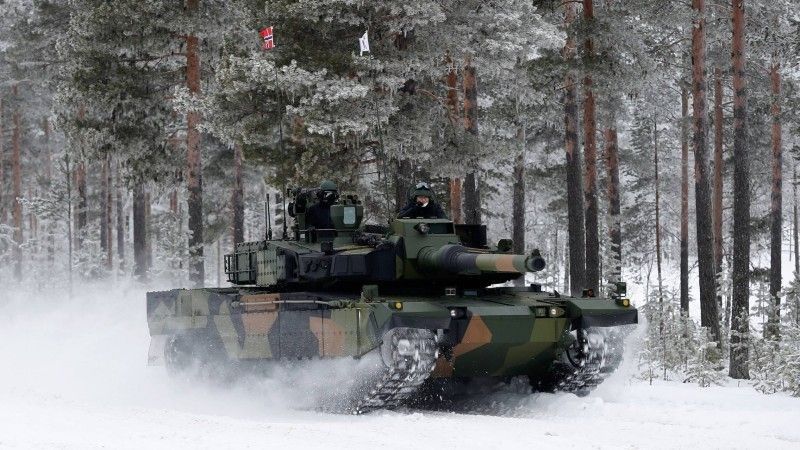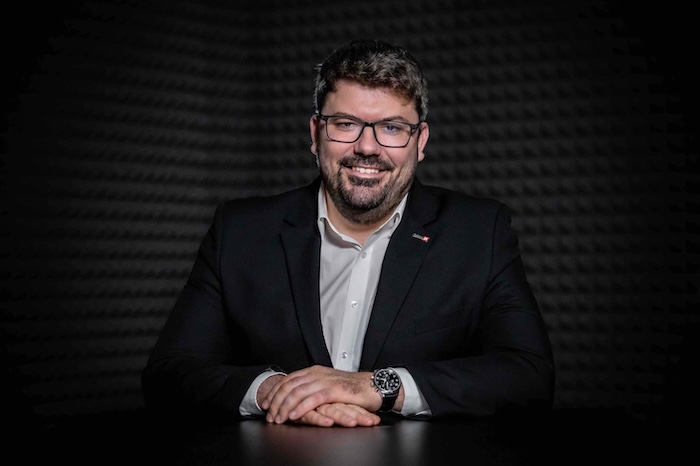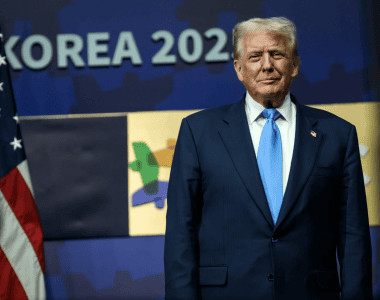Polish Weapons for Korean Vehicles? A Korean Expert: This Could Be a Very Good Idea [INTERVIEW]

Photo. T. Kjosvold/Forsvaret
Current configuration of Redback is being used with an Australian-Israeli turret. So, I think using Polish remote controlled turrets and RCWS could be a very good solution - as Mr Yong-Weon Yu, The Chosun Daily Newspaper Reporter & Military Specialist, Chief of Planning and Coordination, Korean Defense and Security Forum (KODEF) told Defence24.pl in an interview. He also mentions the Republic of Korea Army (ROK Army) strategy as well as prospects for cooperation between Poland and Republic of Korea.
Jędrzej Graf: After the full-scale aggression against Ukraine, Poland launched a large-scale procurement program in South Korea, amounting for more than USD 13 billion up to date. Polish officials speak about the long term strategic partnership, but we would also like to know more about Korean views and about Korean Army in particular. So I would like to start with the general question. What is the main trend in the Korean Army Development?
Mr Yong-Weon Yu, The Chosun Daily Newspaper Reporter & Military Specialist, Chief of Planning and Coordination, Korean Defense and Security Forum: The population of Republic of Korea is decreasing, and also the number of soliders is also decreasing. In five years, the number of Army soldiers will be decreased by 110 000. That is why we are focusing more and more on automated technologies. An example of this is using the autoloader in K2 tank and K9A2 howitzers so that less soldiers are required to operate the system.
In the future, we will be taking more steps toward this direction, not only in designs of tanks and howitzers, but also in general. We will focus on unmanned technologies and manned-unmanned teaming, so less manpower will be needed to obtain certain capability. Other countries, like Poland are also facing those trends. As Poland is buying K2 tanks and K9 howitzers, it also could consider that unmanned and MUM-T technologies (Manned-Unmanned Teaming - ed.) will be added into them in the future. In Korea Army this transition to unmanned technology is called Army Tiger 4.0.

Photo. Chosun Daily
That sounds very interesting, but what is the Korean vision of the cooperation with Poland? Does Korea, as a country expect Poland to become a strategic partner, or does it see Poland mainly as a training partner?
There will certainly be a lot of cooperation in the defence sector between both countries. In my opinion, Poland and Korea have a similar historical backgrounds as both countries have experienced invasions by neighbouring countries in the past. Considering this perspective, Poland and Korea can share a lot of values, which can facilitate not only industrial cooperation, but also strategic partnership and geopolitical bonds between our countries. A similar view is shared by highly ranking government officials, including DAPA representatives.
Read more
For now, cooperation between Poland and Korea is focused on conventional systems, such as K2 Main Battle Tanks and K9 Howitzers. As the future of the Korean Army is the unmanned systems, could we expect that the cooperation to expand to that area?
To start with, K2PL will be much more advanced than the system that the Korean Army is currently using. For example, Remote Controlled Weapon System (RCWS) and Active Protection System (APS) that will be included on the K2PL are not a part of the configuration of the K2 tank that the Korean Army is using. Development of unmanned ground systems by definition takes much time, the Army Tiger 4.0 project is long term. So, if Poland and Korea engage in the long-term strategic cooperation, unmanned ground systems may become one area of this cooperation.
Is it possible that once the manufacturing of the K2PL Main Battle Tank is established in Poland, the Polish industry could be engaged into production on other markets?
To start with, the general approach of Korean industry is to customize its offer to every customer. So, for instance, the specifications of K2NO Main Battle Tank, where we are competing with Germany, are not the same as compared to K2PL. Even though both tanks feature Active Protection Systems and RCWS, the technologies used there are a little bit different.
So I think it might be possible to export K2PL, but we need to be advised that a potential export would be influenced by customization of the Main Battle Tank to a specific customer.
On the other hand, the Polish production lines could be used for construction of tanks customized for other countries in the Europe, once the Polish demand is met. So that would be a win-win project for both countries, both from industrial and government perspective. Many foreign companies which enter Korean market act in a similar way, using the Korean "hot production lines" in Asia markets. That could be a very good idea.

Photo. Jarosław Ciślak/Defence24.pl
If we touched tanks, then I would like to ask about the Next Generation MBT. Do you see a potential for Polish-Korean cooperation regarding the Next Generation MBT, one that could replace K2 in the production in future?
Next generation MBT is originally designed for the Korean Army. In my personal opinion, as the Poland and Korea are increasing the cooperation, after the K2 project, Hyundai Rotem can co-design the new tank with the Polish industry. The next generation Main Battle Tank is in a initial stage of design, so there is a room for cooperation.
Read more
In Norway there is a discussion on the Main Battle Tank, where two design are competing – Leopard 2A7 and K2. Recently there are even some voices expressed in such a way that Norway would generally resign from purchasing tanks (so neither Leopard nor K2 would win in effect). What is your opinion?
Leopard 2A7 is quite popular in European market, so many people are expecting it to win, particularly as Norway has political and military ties to Germany. On the other hand, K2 has very modern design and in my opinion has certain advantages over Leopard 2A7 – it is more digitized.
The general decision on the Main Battle Tank in Norway is expected to take place soon, I think it will clarify everything and all the concerns you mentioned. We will see whether Norway will prefer the most advanced technology, or a solution based on the political relationship.
Poland has purchased Korean K2 Main Battle Tanks, but what about the support vehicles – Engineering, Recovery Vehicle? Will they also be based on K2? And is there a chance they will be co-produced with the Polish industry?
After Hyundai Rotem concluded negotiations on the Main Battle Tank, it also started discussions with the Polish side on the Armored Recovery Vehicle and the Breacher, of Engineering Vehicle, based on the K2 platform. So yes indeed, there is a chance that Poland could be provided support vehicles based on K2 platform, and those could be co-produced by the Polish industry.
I would like to have a question regarding Redback. I understand it has not yet been purchased by the Republic of Korea Army. Do you think that Redback will finally be purchased for the Republic of Korea Army?
The current Redback vehicle has been designed to the Australian specification. This is a heavy, high-technology vehicle, but it also comes with a high cost, estimated at about 10 USD million per piece. The cost is not only due to the size and weight of the vehicle, but largely due to Australian turret and Israeli electronics.
The ROK Army (Republic of Korea Army) wants a new Infantry Fighting Vehicle, but it may not be able to afford Redback in big quantity, and ROK Army has a large force structure. I think that it is possible that DAPA and ROK Army will work with Hanwha Defense to redesing Redback in such a way that it will be less costly (perhaps some of the most expensive technologies would be removed) and it will include more Korean components that will replace Australian ones.
What do you think about the potential partnership between Poland and Korea in the area of Wheeled Armored Vehicles? Poland is currently using the Rosomak APC based on Patria AMV, but at the same time country was not satisfied by the transfers of technology it has received.
Hyundai Rotem has two types of Wheeled Armored Vehicles: K806 and K808, both have recently been introduced to the Republic of Korea Army. Depending on the business model and the Polish Army requirements, any of those could be offered, and I think the 8x8 vehicle fits more the requirement. Also, a joint creation of the Wheeled Armored Vehicle could also not be ruled out.
Let me move to general issues a bit. Poland has certain negative experience with US and European producers, when it comes to industrial cooperation. Often at the beginning of a procurement project there had been a lot of announcements, but there were a lot of problems both at industry to industry level and also at the political level and in the end, Polish industry did not gain the transfer of technology that it had planned at the beginning. How do you want do avoid such risks in the Polish-Korean cooperation?
I was not aware of the problems that Poland has previously experienced. However, I am certain that the Korean government and the Korean industry will take into account your experience and together with the Polish government and industry it will plan the industrial cooperation in such a way that it will be executed successfully. The Korean industry has a lot of experience in Transfers of Technology, not only as a provider of the technology but also as a recipient of the technology, because it has been cooperating with many international suppliers.
The Polish government is currently making large scale investments in the Korean industry, which will boost the Korean economy. At the same time, you see any chance that the Korean government would like to order Polish weapon systems, to boost the Korean Army capability? For example, Piorun MANPADS, Rak mortars or remote controlled weapon systems and unmanned turrets, like ZSSW?
Republic of Korea has developed its own MANPADS systems, so I don't expect an interest in this area. However, I know that Poland has independently developed high quality, indigenous Remote Controlled Weapon Systems as well as Unmanned Turrets.
This a bit weaker side of the Korean industry, as for instance current configuration of Redback is being used with an Australian-Israeli turret. So, I think using Polish remote controlled turrets and RCWS could be a very good solution. I also think K808 APC, K-151 Korean Light Tactical Vehicle with Polish armor and gun turret would be a good option.
What are the factors that Korean industry takes into account when it makes decision on the localization of production in Poland, including the specific decision to locate a factory in a certain city?
I think there is a variety of factors, and there is a need to work out a win-win strategy for both Polish and Korean industry. So that, for example, Polish companies could take part in production of systems for the export markets.
On the other hand, we need to know that there may be different perspectives of the Polish industry and the Korean industry, because a Polish company may prefer to use its existing infrastructure but a Korean company could prefer an entirely new facility in Poland, a greenfield investment.
In addition, there are some political and economic factors that the Polish side might want to consider, just like we do in the Republic of Korea when we set a new investment. So as I said there are a lot of things that need to be taken into account, but in the end we need to work out a formula that will be a true win-win for both the Polish and Korean industry.
There are some media reports that Korean opposition is criticizing the government for providing Poland with tanks and howitzers, while the Korean requirements are also high. How would you comment on that?
It is true there is there is some criticism against those deals, but the party that is now in opposition was leading development and export project for K2 and K9 and also supported the sales to Poland once it was in charge. Simultaneously with the deliveries to Poland, we are increasing the speed of deliveries of equipment to the Korean Army, the industrial capacity, so there are no major risks for the Korean Army. And I am confident that even if the current opposition became government, it will support the cooperation with Poland to pursue the long term defence industry development strategy.
There are media reports on KF-21 (New Generation Fighter Aircraft - ed.) and potential Polish participation in the project. I would like to ask a question: would in your opinion Korea like Poland to participate in the project? What could be benefits for the Polish side and the Korean side? What is the current stage of the program development? What will be the future versions? What were the reactions to annoucement of Sebastian Chwałek, PGZ President, on the Polish interest in KF-21?
Sebastian Chwałek, PGZ President expressed the strong desire to participate in the KF-21 project on my interview for the first time. Many Koreans, not only Korean people including the netizens, but also ROK military and industry people welcome the Chwałek's proposal. KF-21 will be developed by 2026 as first phase(Air-to-Air capability), and will be developed as second phase from 2026 to 2028(Air-to-Surface capability).
Thank you for the conversation.





